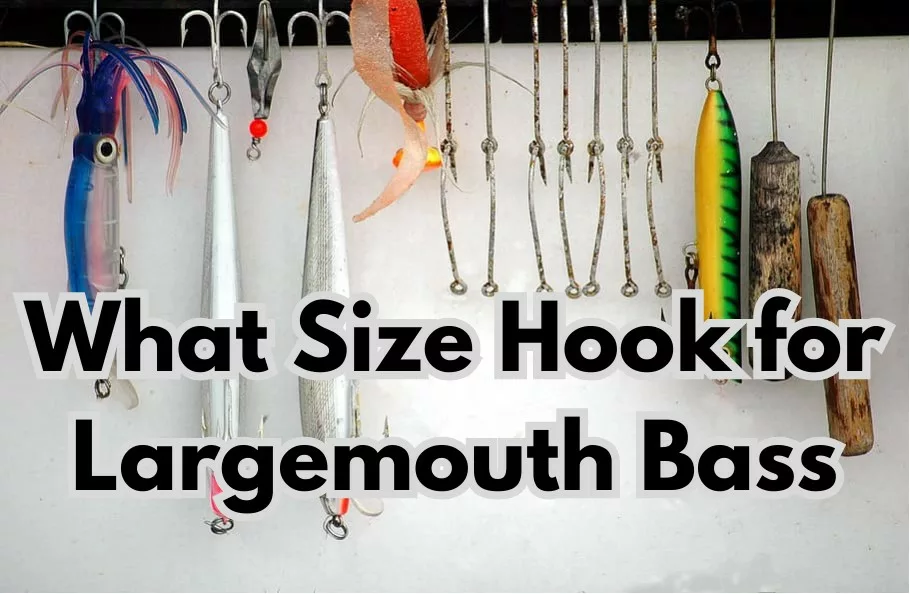Fishing for largemouth bass can be an exciting and rewarding experience. These freshwater predators are known for their voracious appetite and aggressive strikes, making them a popular target among anglers. However, one crucial aspect of bass fishing that often gets overlooked is the size of the hook used. In this article, we will explore the importance of hook size when targeting largemouth bass and provide recommendations to help you make the right choice.
Introduction
When it comes to fishing for largemouth bass, using the correct hook size can significantly impact your chances of success. Choosing the right hook size ensures that you can effectively hook and land the fish without causing unnecessary harm. A properly sized hook allows for a secure hookset while minimizing the risk of the fish swallowing the hook deeply.
Understanding Largemouth Bass
Before we delve into hook sizes, it’s essential to have a basic understanding of largemouth bass behavior and anatomy. Largemouth bass are known for their large mouths, which enable them to engulf prey items. They typically strike their prey headfirst, engulfing it entirely within their mouth.
Importance of Hook Size
Using the correct hook size is crucial for several reasons. Firstly, it ensures that the hook is proportional to the size of the bass you are targeting. A hook that is too small may not provide sufficient penetration or holding power, potentially leading to missed hooksets or fish escaping during the fight. On the other hand, using a hook that is too large may impede the bass’s ability to inhale the bait fully, resulting in missed opportunities.
Secondly, choosing the right hook size helps to protect the fish. Using oversized hooks can cause significant damage to the bass’s mouth and throat, making it more difficult for them to feed and potentially leading to injury or mortality. By selecting an appropriate hook size, you can ensure a better balance between hooking efficiency and fish welfare.
Factors to Consider
When determining the ideal hook size for largemouth bass, there are several factors to consider:
1. Bait Size
The size of the bait you plan to use plays a significant role in determining the appropriate hook size. Ideally, the hook should be proportionate to the bait, allowing for a natural presentation and secure hookset. Smaller baits typically require smaller hooks, while larger baits may necessitate larger hooks to accommodate their size.
2. Fishing Conditions
The fishing conditions, such as water clarity and cover, can influence the hook size you should use. In clear water with minimal cover, bass may exhibit a more cautious approach, requiring finesse techniques and smaller hooks. In contrast, murky water or heavy cover may call for larger hooks to ensure better hook penetration and control over the fish.
3. Targeted Bass Size
Consider the average size of the largemouth bass in the area you are fishing. If you are targeting larger, trophy-sized bass, you may want to use larger hooks to handle their size and power. Conversely, if you are fishing in waters where smaller bass predominate, downsizing your hook can increase your chances of success.
4. Fishing Technique
Different fishing techniques may benefit from specific hook sizes. For example, topwater lures often require smaller hooks to ensure the bait floats naturally and doesn’t hinder the bass’s ability to strike. On the other hand, techniques like Texas rigging or jigging may necessitate larger, more robust hooks to handle the rig’s weight and maintain control during the retrieve.
Recommended Hook Sizes
While the ideal hook size may vary depending on the factors mentioned above, here are some general recommendations for largemouth bass fishing:
– 1/0 to 2/0 Hooks
These hook sizes are versatile and commonly used for a wide range of baits and techniques. They are suitable for medium-sized baits and can accommodate both finesse and power fishing approaches.
– 3/0 to 4/0 Hooks
These slightly larger hooks are suitable for bigger baits and targeting larger bass. They provide better hook penetration and control while still offering a good balance between hook size and fish welfare.
– 5/0 to 6/0 Hooks
These larger hooks are reserved for heavyweight techniques or when targeting trophy-sized bass. They can handle bulkier baits and offer increased power and control during the fight.
Fishing Techniques for Largemouth Bass
To enhance your chances of success when targeting largemouth bass, it’s essential to employ effective fishing techniques. Here are some popular techniques and how hook size ties into them:
Using Topwater Lures
When using topwater lures, such as poppers or frogs, smaller hooks in the 1/0 to 2/0 range are commonly used. These hooks allow the bait to float naturally on the surface while still providing enough strength and penetration when the bass strikes from below.
Texas Rigging
Texas rigging is a versatile and popular technique for bass fishing. It involves using a bullet weight and a hook embedded in a soft plastic bait. Hook sizes between 3/0 and 4/0 are commonly employed for Texas rigging, as they provide a good balance of penetration and control.
Carolina Rigging
Carolina rigging is an effective technique for covering large areas and presenting baits near the bottom. Hook sizes in the 2/0 to 4/0 range are commonly used, depending on the size of the bait and the targeted bass.
Drop Shot Rigging
Drop shot rigging is a finesse technique that uses a weight at the end of the line and a hook tied above it. For this technique, smaller hooks in the 1/0 to 2/0 range are typically employed, allowing for a natural presentation and better hooksets.
Jigging
Jigging involves using a jig head with a soft plastic trailer. The hook size for jigging depends on the weight of the jig head and the size of the soft plastic. Common hook sizes range from 3/0 to 5/0, offering a good balance of power and finesse.
Spinnerbait Techniques
Spinnerbaits are versatile lures that can be retrieved at various speeds and depths. Hook sizes between 3/0 and 5/0 are commonly used, depending on the size of the bait and the targeted bass.
Adjusting Hook Size for Different Conditions
While the recommended hook sizes provide a general guideline, it’s crucial to remain adaptable to different fishing conditions. If you find that you are not getting hooksets or missing strikes, consider adjusting your hook size accordingly. Fishing is a dynamic activity, and being open to experimentation can lead to better results on the water.
Hook Size and Bait Selection
It’s important to note that hook size should complement the bait you are using. Choosing the right combination ensures that the bait’s action is not impeded, and the hook is concealed within or presented naturally. Always consider the compatibility between the hook and the bait to achieve optimal performance.
Conclusion
Choosing the right hook size when targeting largemouth bass is a critical aspect of successful fishing. By considering factors such as bait size, fishing conditions, targeted bass size, and fishing technique, you can make informed decisions about the hook sizes you should use. Remember to prioritize the welfare of the fish and aim for a balance between hooking efficiency and fish protection. So next time you head out to catch largemouth bass, take the time to select the appropriate hook size, and watch your fishing success soar.
FAQs
1. Can I use the same hook size for all largemouth bass fishing techniques?
While certain hook sizes can be versatile and cover multiple techniques, it’s advisable to consider the specific requirements of each technique. Adapting the hook size based on the fishing technique can enhance your chances of success.
2. What happens if I use a hook that is too small for largemouth bass?
Using a hook that is too small can result in missed hooksets or fish escaping during the fight. It may also increase the likelihood of the fish swallowing the hook deeply, potentially causing harm to the fish.
3. Is it better to use a larger or smaller hook for largemouth bass?
The ideal hook size depends on various factors, including bait size, fishing conditions, and the targeted bass size. It’s important to strike a balance between hooking efficiency and fish welfare by choosing a hook size that matches these considerations.
4. How do I know if the hook size is suitable for the largemouth bass I’m targeting?
Experimentation and observation are key. If you find that you are consistently missing hooksets or not landing fish, consider adjusting the hook size and observing the results. Over time, you’ll gain a better understanding of what works best in different situations.
5. Can I use treble hooks for largemouth bass?
Treble hooks can be effective for certain techniques, such as using crankbaits or jerkbaits. However, it’s essential to be mindful of fish welfare when using treble hooks, as they can potentially cause more damage if not handled carefully.

